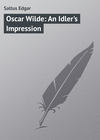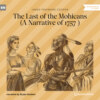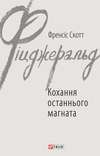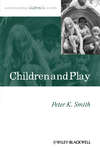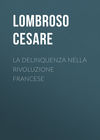Kitabı oku: «The Man of Genius», sayfa 14
“It will be seen that beginning at the circumference at any point and going toward the centre there is a complete astronomical representation of the season of the year, first the name of the constellation, then in succession the month, the constellation depicted pictorially, the sign of the zodiac and the part of the human body corresponding in the old astronomy to this sign of the zodiac.”
Of the four designs reproduced together, the first, the Shechinah, or Light of Love, represents that miraculous light or visible glory which was to the Jews a symbol of the Divine presence; the second represents the angel Sandalphon with the Holy Grail at the side and the letters Alpha and Omega at top (the design must be inverted to make out the Omega); the third, Sub Rosa, and the fourth, Imp and Frogs, are graceful fancies which sufficiently explain themselves, as does the Witch.
While working on these sketches, he made at the same time the design for a book-plate, representing Cupid learning the alphabet, and the entire design, he says, is full of symbolism – a favourite word with him. Cupid has his finger on Alpha, signifying the beginning of his education; above the book is Cupid’s target, with a heart for the centre, that he has pierced with an arrow, while the full quiver stands to the right. The curious fish under the Veritas represents the ΙΧΘΥΣ of the early Christians, while three crosses, symbolic of the Christian religion, are in the upper left-hand corner, brought out by heavy shading of the cross lines. On the book of knowledge is perched the dove, emblematic of purity, while the olive branch at the left of the book and the palm under the Fool’s Bauble give still other religious symbols. The lamp of knowledge is burning brightly in front of Cupid, while at his feet are the square, compass, triangle, and pencils, symbolizing the designer’s profession.

Minuteness of Detail.– In some insane artists, especially monomaniacs, we find an opposite characteristic – the exaggeration of particular details – the general effect being lost in obscurity through their excessive efforts after verisimilitude. Thus, in a landscape exhibited among those rejected from the Turin salon, not only was a general view of the country given, but every separate blade of grass could be distinguished. In another picture, intended to be very imposing, the strokes of the brush produced the effect of pencil shading.

Atavism.– Both minuteness and symbolism are themselves atavistic phenomena; but, in addition to them, there may be noted (in a large number of cases) a total absence of perspective, while the rest of the execution shows clearly enough that the author is not wanting in artistic sense. One would take him to be a true artist, but one brought up in China or ancient Egypt. Here we have evidently a kind of atavism explicable by arrested development of some one organ, and a corresponding backwardness in the products of that organ. A French captain, suffering from paralysis, drew figures stiff as Egyptian profiles. A megalomaniac of Reggio executed a coloured bas-relief, in which the disproportionate size of the feet and hands, the extreme smallness of the faces, and the stiffness of the limbs, completely recall the work of the thirteenth century. Another patient, at Genoa, carved bas-reliefs on pipes and on vases, exactly similar to those of the Neolithic Age.

THE WITCH.

ARABESQUES BY PARANOIAC ARTIST.
Raggi has sent me some flints carved by a monomaniac entirely ignorant of archæology, which, in the choice of figures and emblems, recall the style of Egyptian and Phœnician amulets. In these instances we see the influence of similar psychical conditions at work.
Arabesques.– In some few patients, M. Toselli has called my attention to a singular predilection for arabesques and ornaments which tend to assume a purely geometric form, without loss of elegance. This is the case with monomaniacs; in cases of dementia and acute mania there prevails a chaotic confusion, which, however, does not always imply absence of taste. I have seen an instance of this in a kind of ship, the work of a dementia patient, composed of an enormous number of little slips of wood, brilliantly coloured, very thin, and intertwined in an infinite variety of ways, the general effect being very graceful.
Obscenity.– In some work done by erotomaniacs, paralytics, and demented patients, the salient characteristic, both of the drawings and of the verses, is the most shameless indecency. Thus a cabinet-maker would carve virile members at every corner of a piece of furniture, or at the summits of trees. This, too, recalls many works of savages and of ancient races, in which the organs of sex are everywhere prominent. A captain at Genoa was fond of drawing scenes in a brothel. In many the obscene character is marked by the most singular pretexts, as though it were demanded by artistic requirements. A monomaniac priest used to sketch his figures nude, and then artfully drape them by means of lines which revealed the generative organs. He defended himself against criticism by saying that his figures could only appear indecent to those who were in search of evil.
M – illustrated his strange and often beautiful verses with innumerable daubs, representing animals of monstrous forms struggling with men and women, or monks and nuns, naked, in the most shameless attitudes.
In others the indecency is, if possible, still more evident, especially in cases of paralytic dementia. I remember an old man who used to draw a vulva on the address of his letters to his wife, surrounding it with obscene couplets in dialect.
It is a curious coincidence that two artists – one at Turin and the other at Reggio – who were both megalomaniacs, should both have had sodomitic instincts, which they combined with the delusion of being deities, and lords of the world, which they had created and emitted from their bodies. One of them (who, nevertheless, had a real artistic sense) painted a full-length picture of himself, naked, among women, ejecting worlds, and surrounded by all the symbols of power. This repeats, and at the same time explains, the Ithyphallic divinity of the Egyptians.
Criminality and Moral Insanity.– In this connection it is important to notice that the greater number of these artists show, in addition to their other forms of mania, a marked tendency to moral insanity, especially in the form of unnatural vice. The painter who produced the picture of “Delirium” was a pederast. The man who constructed the marvellous model of the Reggio Asylum, already alluded to, was neither draughtsman, sculptor, nor engineer. He was a madman, and, in addition, a thief, with unnatural tendencies. This man, whenever the fancy took him, escaped from the asylum, wandered about for some days, began to steal when he had exhausted the small amount of money he had about him, and when imprisoned declared himself a lunatic, and so got acquitted and sent back to Reggio, when, after a short interval, he would repeat the same line of conduct.
Dr. Tamburini told me that he, too, had been struck by the co-existence of artistic faculty and moral insanity in these patients.
Uselessness.– A characteristic common to many is the complete uselessness of the work to which they devote themselves; and here I recall once more Hécart’s dictum: —
“C’est le travail des fous d’épuiser leurs cervelles
Sur des riens fatigants, sur quelques bagatelles.”328
A Genevan, affected by persecutory monomania, spent years in embroidering on egg-shells and lemons. Though her work was most beautiful, it could be of no advantage to her, for she kept it jealously concealed; and I myself, though she was very fond of me, never saw any of it till after her death.
Here we have, as in the case of artists of genius, the love of truth and beauty for their own sake alone, only that the aim is reversed.
Sometimes the work done, though very useful in itself, is of no advantage to the artist, and has no connection with his profession. Thus a captain, who had become insane, presented me with the model of a bed for violent patients, which, I believe, would be extremely useful in practice. Two other patients, together, made, out of a piece of beef-bone, some very neat match-boxes, ornamented with carvings in relief, which could be of no profit to themselves, since they refused to part with them for money.
There are, however, some exceptions. A melancholiac patient, with homicidal and suicidal tendencies, manufactured himself a very serviceable knife, fork, and spoon – metal ones not being allowed him – out of the bones which remained over from his dinner. A café-keeper at Colligno, a megalomaniac, compounded excellent liqueurs out of the scraps left over from meals, though of the most different kinds of food. A criminal lunatic constructed himself a key out of a number of small pieces of wood joined together. I do not count among these examples those who have prepared themselves real cuirasses of iron and stone – a piece of work in relation to the special delusion of persecutions, and implying an amount of labour out of proportion to the advantage obtained.

DELIRIUM.
Insanity as a subject.– Many choose insanity as the subject of their paintings. Professor Virgilio has furnished me with a very curious portrait of an insane patient at the moment of attack – the eyes rolling, the hair on end, the arms extended. Under his feet is the epigraph: “Delira” (“He is raving”). This is the work of an alcoholic pederast.
I think that a sane artist would have some difficulty in painting a closer likeness of delirium. This reminds me how frequently I have found, among the poets of asylums, the tendency to describe insanity; and it has been a favourite theme with great poets who have suffered from ill-health – Tasso, Lenau, Barbara, Musset. Mancini, immediately after his recovery, painted a woman offering for sale the picture executed by a madman; and Gill, in the hospital of Sainte-Anne, painted a raving maniac with terrible truth to nature.329
Absurdity.– One of the most salient characteristics of insane art is, as might be expected, absurdity, either in drawing or colouring. This is especially noteworthy in some maniacs, owing to the exaggerated association of ideas, through which the connecting links (which would serve to explain the author’s conception) are totally lost. Thus, an artist painted a “Marriage at Cana,” with all the figures of the apostles exceedingly well drawn; but in place of the figure of Christ was a large bunch of flowers.
Paralytic patients draw objects without any sense of proportion; their hens are the size of horses, and their cherries of melons; or, while striving after perfection in the design, the execution is merely childish. One, who believed himself a second Horace Vernet, drew horses by means of four straight strokes and a tail.330 Another drew all his figures upside down. Other dementia patients, owing to the same amnesia which is apparent in their speech, leave out the most essential points of their conception, like M – at Pesaro, who made an excellent drawing of a general, seated, but forgot the chair. (Frigerio.)
Imitation.– There are some who are very successful in imitation, but can produce nothing original; they will, for instance, copy the façade of the asylum, or heads of animals, with the minute accuracy of detail which characterizes primitive art. In this branch I have seen successful work done by cretins and idiots, the latter drawing in exactly the same manner as primitive man.
Uniformity.– Many continually repeat the same idea; thus one, mentioned by Frigerio, filled sheets of paper with a bee gnawing the head of an ant; another, who believed that he had been shot, would paint nothing but fire-arms; a third confined himself to arabesques.
Summary.– These traits explain the instances of partial perfection to be found in dementia patients; for a repetition of the same movement tends to bring it nearer and nearer to perfection. At other times, as we have seen in the extempore poets and authors of the asylum, it is the tenacity and energy of the hallucinations which makes a painter of a man who was never one before. Blake was able to picture to himself, as living and present, persons already dead, angels, &c. This was the case, also, with the strange insane poet, John Clare, who believed himself a spectator of the Battle of the Nile, and the death of Nelson; and was firmly convinced that he had been present at the death of Charles I. In fact, he described these events with such remarkable fidelity and accuracy, that it is scarcely probable he could have done it so well had he been in full possession of his reason – the more so, as he was entirely without culture.331 This explains why insane painters and poets are so numerous. It is easy to reproduce clearly what one sees clearly. Moreover, the imagination is most unrestrained when reason is least dominant; for the latter, by repressing hallucinations and illusions, deprives the average man of a true source of artistic and literary inspiration.
For the same reason, too, art itself, may, in its turn, encourage the development of mental disease. Vasari relates that one Spinelli, a painter of Arezzo, having attempted to paint the deformity of Lucifer, the latter appeared to him in a dream and reproached him with having made him so ugly. The painter was so affected by this apparition as to fall seriously ill; and it continued to haunt him for years.332
Music in the Insane.– Musical ability is often diminished in those who, previous to their illness, cultivated this art with passion. Dr. Adriani observed that musicians, under his care for insanity, almost entirely lost their powers. They could still play any piece, but it was done quite mechanically and without expression. Other dementia patients would play the same piece, sometimes even a few phrases, over and over again.
Donizetti, in the last stage of dementia, no longer recognized his favourite melodies. His last works show traces of that fatal influence which critics have also observed in Schumann’s symphony of the “Bride of Messina,” composed during his attacks of insanity.333
These facts, however, do not contradict our assertion that insanity awakens new artistic qualities in persons not previously gifted in that way; they only show that (as we have seen in the case of professional painters) it can give no additional power or skill to those who already possessed them when attacked by disease.
A megalomaniac – formerly a syphilitic patient – under the care of Dr. Tamburini, sang beautiful airs when under excitement, at the same time, instead of playing an accompaniment, she improvised, on the pianoforte, two distinct motives which had no connection with each other or the air she was singing. This fact confirms the observations of Luys as to the independent action of the cerebral hemispheres.
A young man attacked by pellagra, who recovered in my hospital, composed expressive and original melodies.
M. Raggi told me that he had had under his care a melancholic patient who, during her attacks, played without enthusiasm, and even with repugnance, but, when the fit passed off, would spend whole days at the piano, and execute the most difficult partitions with a truly artistic enthusiasm. In the same way, a paralytic showed, through the whole course of his illness, a genuine musical mania, during which he imitated all instruments, and agitated himself, in frantic enthusiasm, at the piano passages.
Raggi also observed a paralytic dementia patient who, after breaking his thigh-bone by a leap from a window, rendered every bandage which could be devised useless by singing, for days together, motives from Il Trovatore at the top of his voice, and accompanying his singing with abrupt rhythmical movements of the pelvis. A fancy for monotonous chanting also showed itself in another paralytic, who believed himself to be a great admiral.
In maniacs, acute and joyous notes predominate, and, still more, the repetition of the rhythm.
Every one who has paid even a short visit to an asylum has noticed the frequency of singing and shouting and “high and thin voices, and with them a sound of hands.”334 Nor is it hard to understand this, if we remember how Spencer and Ardigò have shown that the law of rhythm is the most general form under which, in the whole of nature, energy is manifested, from the crystal to the star, or to the animal organism. Man, therefore, only follows a general organic law in giving way to this impulse, which he does the more readily the less he is controlled by reason. This explains the number of poets of the new school who are found in asylums. This is the reason why savage nations have a natural inclination for music; and a missionary told Spencer that many to whom he taught the Psalms, with music, in the evening, could repeat them by heart on the following day.
Savages, in speaking, make use of a sort of monotonous chant analogous to our recitative. Primitive poetry was always sung, whence all the different words connected with singing applied to poetry and poets. The mysterious magic formulas and recipes of the ancients335 were also sung, or chanted, whence the word “enchantment.” Even at the present day, in the neighbourhood of Novi and Oulx, I have heard peasant-women, in making inquiries of one another, modulate their voices in true musical rhythm. Modern Improvvisatori do not seem able to produce their verses except when singing, and agitating all their muscles.
It must be remembered that, according to the observations of Herbert Spencer,336 “the act of singing employs and exaggerates the signs of the natural language of passion. Mental excitement is transformed into muscular energy. An infant will laugh and bound in its nurse’s arms at the sight of a brilliant colour, or the hearing of a new sound.” Strong sensations or painful emotions cause us to gesticulate; in short, they excite the muscular system, which is acted upon in proportion to the intensity of the sensations. Slight pain calls forth a groan, greater pain a cry: the pitch of the voice varies with the force of the emotion, so that, in the strongest emotions, it rises to the octave, or higher; and singing is always involuntarily accompanied by tremors and agitations of the muscles.
What could be more natural than that, in the conditions in which the emotions are most energetic, and so frequently atavistic, as is the case in insanity, these tendencies should be reproduced on a larger scale?
This, too, explains why so many morbid men of genius should be musicians: Mozart, Schumann, Beethoven, Donizetti, Pergolese, Fenicia, Ricci, Rocchi, Rousseau, Handel, Dussek, Hoffmann, Glück, Petrella.337 Musical creation is the most subjective manifestation of thought, the one most intimately connected with the affective emotions, and having less relation to the external world than any other, which causes it to stand more in need of the fervent but exhausting emotions of inspiration.
Perhaps the study of these peculiarities of art in the insane, besides showing us a new phase in this mysterious disease, might be useful in æsthetics, or at any rate in art-criticism, by showing that an exaggerated predilection for symbols, and for minuteness of detail (however accurate), the complication of inscriptions, the excessive prominence given to any one colour (it is well known that some of our foremost painters are great sinners in this respect), the choice of licentious subjects, and even an exaggerated degree of originality, are points which belong to the pathology of art.
CHAPTER III.
Literary and Artistic Mattoids
Definition – Physical and psychical characteristics – Their literary activity – Examples – Lawsuit mania – Mattoids of genius – Bosisio – The décadent poets – Verlaine – Mattoids in art.
WE have just been considering, in madmen, the substantial character of genius under the appearance of insanity. There is, however, a variety of these, which permits the appearance of genius and the substantial character of the average man; and this variety forms the link between madmen of genius, the sane, and the insane properly so called. These are what I call semi-insane persons or mattoids.
This variety constitutes, in the world of mental pathology, a particular species of a genus distinguished by Maudsley as “odd, queer, strange” persons of insane temperament, and previously by Morel. Legrand du Saulle, and Schüle (Geisteskrankheit, ii., 1880) regard them as hereditary neurotics, Raggi as neuropathics, and now many as paranoiacs– a terminology which produces a hopeless confusion.
The graphomaniac, representing the commonest variety, has true negative characteristics – that is to say, the features and cranial form are nearly always normal (Bosisio, Cianchettini, F – , P – , &c.). His characteristics are not the result of heredity; at most, he is the son of a man of genius (Flourens, Broussais, Spandri, Knester, &c.). This form of aberration is most frequently found in men; I only know of one exception in Europe – Louise Michel – and it appears more especially in great cities, worn out with civilization. The mattoid shows far fewer signs of degeneracy than the insane properly so called: – Of 33 mattoids only 21 showed degenerative characters, and of these last 12 had 2, 2 were found to have 3, there were 2 with 4, and only 1 with 6.
Another negative characteristic is the survival of family affection, and even of that for the human race in general, sometimes reaching such a point as to become exaggerated altruism; though, in many cases, vanity enters largely into the composition of this virtue. Thus Bosisio thinks of and provides for the well-being of posterity, and even of the dead. Thus D – loves his wife and grandchildren, and constantly works for his family; Cianchettini supported a deaf and dumb sister; Sbarbaro, Lazzaretti, Coccapieller, adored their wives.
In prison, a few days ago, I had occasion to perform the operation of blood-transfusion, and wasted much time in trying to find a healthy individual from whom to take the blood. All refused; but a consumptive mattoid, as soon as he heard of the matter, volunteered for the operation, and was overwhelmed with shame when I would not make use of him.
They have an exaggerated conviction of their own personal merit and importance, with the peculiar characteristic that this opinion shows itself rather in writing than in words or actions, so that they do not show irritation at the contradictions and evils of practical life.
Cianchettini compares himself to Galileo and to Jesus Christ; but sweeps the barrack-stairs. Passanante proclaims himself President of the Political Society while working as a cook. Mangione classified himself as a martyr to Italy and to his own genius; yet he condescended to act as a broker. Caissant claimed to be a cardinal, but, in the meantime, he was a clever parasite, and made large profits through his very insanity. The shepherd Bluet believed himself to be an apostle and count of Permission, and, like the author of Scottatinge, deigned to address himself to none but royal personages. Yet he did not refuse to carry on the trade of a horse-breaker.
Stewart, the eccentric author of the New System of Physical Philosophy, who travelled all over the world to discover the polarity of truth, asserted that all the kings of the earth had entered into an alliance to destroy his works. He therefore gave the latter to his friends, with the request to wrap them up well, and bury them in remote localities, – never revealing the latter, except on their death-beds. Martin Williams – brother of that Jonathan Williams, who, in an attack of insanity, set fire to York Minster, and of John Williams who struck out a new line in painting – published many works to prove the theory of perpetual motion. After having convinced himself by means of thirty-six experiments of the impossibility of demonstrating it scientifically, it was revealed to him in a dream that God had chosen him to discover the great cause of all things, and perpetual motion; and this he made the subject of many works.338
These persons would not come under the heading of mattoids, if, in their writings, the earnestness and persistence in one idea which make them resemble the monomaniac and the man of genius, were not often associated with the pursuit of absurdity, continual contradictions, and the prolixity and utility of insanity. One tendency overpowers all others – one which we find predominant in insane genius: viz., personal vanity. Thus, out of 215 mattoids, we find forty-four prophets.
Filopanti, in the Dio Liberale, places his father Berillo, a carpenter, and his mother Berilla among the demigods. He discovered three Adams, and gives a minute narrative, year by year, of the actions of each. Cordigliani prepared to insult the Chamber of Deputies in order to obtain an annuity from the Government, and thought this action much to his own credit. Guiteau thought he was saving the Republic by the murder of the President, and had himself called a great lawyer and philosopher. In the same way Passanante, after having preached the abolition of capital punishment, condemns the guilty members of the Assembly to death; and, after having given orders to “respect the forms of government,” insults the monarchy, makes an attempt at regicide, and proposes to “abolish all misers and hypocrites.”
A physician, S – , prints a statement that blood-letting exposes to an excess of light, another announces in two thick volumes, that diseases are elliptical.
Critics have said, referring to the works of Démons, that his Dialectic Quintessence and sextessence are a true quintessence of absurdity.339 Gleizes affirms that flesh is atheistical. Fuzi (a theologian) asserts that the menstrual blood has the property of quenching conflagrations.
Hannequin, who used to write in the air with his fingers, and had an aromal trumpet, by means of which he communicated with the spirits dispersed through the air, declares that in the future age many men shall become women and demigods.
Henrion, at the Académie des Inscriptions, advanced the theory that Adam was forty feet in height, Noah twenty-nine, Moses twenty-five, &c.
Leroux, the celebrated Paris Deputy, who believed in metempsychosis and the cabbala, defined love as “the ideality of the reality of a part of the totality of the Infinite Being,” &c., and wished to insert the principle of the triad in the preamble of his Constitution.
Asgill maintained that men might live for ever, if only they had faith.
It is true that, here and there, some new and vigorous notion emerges from the chaos of such minds, because the only symptom of genius developed in them by psychosis is a less degree of aversion to novelty, or, to employ my own terminology, of misoneism.340 Thus, for example, amid the most absurd opinions, Cianchettini has some very fine passages:
“All animals have the instinct of self-preservation, with the minimum of fatigue, of escaping from troublesome thoughts, and of enjoying the delights of life; and to obtain these things, liberty is indispensable to them.
“All animals, except man, gratify and always have gratified these instincts, and perhaps will always continue to do so. Mankind alone, constituted as a society, find themselves fettered, and in such a Way that no one has ever succeeded, not merely in bringing them into a state of peace and liberty, but even in showing how they may attain this end.
“Well – I propose to demonstrate this proposition. And, as a locked door cannot be opened without breaking it, save by means of a key or a pick-lock; so, as man has lost his liberty by means of the tongue, nothing but the tongue, or its equivalents, can set him free without injury to his nature.”
Amid the doggerel jargon of the Scottatinge, I find this beautiful line on Italy —
We shall see, in Passanante’s biography, that sometimes, in his writings and still more in his speeches, he struck out vigorous and original ideas which, in fact, led many persons into error as to the nature and reality of his disease. I may mention the sentence, “Where the learned lose themselves, the ignorant man may triumph,” – and another, “History learnt from the people is more instructive than that which is studied in books.” Bluet distinguishes “the maid from the virgin, in that the first has the will for evil without the power, and the second has neither the power nor the will.”
It is natural that mattoids should repeat in their conceptions the ideas of stronger politicians and thinkers, but always in their own way, and always exaggerated. Thus Bosisio exaggerates the delicate consideration of our lovers of animals, and anticipates the ideas of Mlle. Clémence Royer and Comte on the necessity for the application of the Malthusian theory. In the same way, Detomasi, a dishonest broker, discovered a practical application (except for the morbid eroticism which he added to it) of the Darwinian system of natural selection. Cianchettini wishes to put Socialism into practice.
But the stamp of insanity is evident, not so much in the exaggeration of their ideas, as in the disproportion of the latter among themselves; so that, from some well-expressed and even sublime conception, we pass suddenly to one which is more than mediocre and paradoxical, nearly always opposed to the received ideas of the majority, and at variance with the position and education of the author. In short, we have that by means of which Don Quixote, instead of extorting our admiration, makes us smile. Yet his actions, in another age, and even in a different man, would have been admirable and heroic. In any case, among mattoids, traits of genius are rather the exception than the rule.342
Most of them show a deficiency rather than an exuberance of inspiration; they fill entire volumes, without sense or savour; they eke out the commonplaceness of their ideas and the poverty of their style with a multitude of points of interrogation and exclamation, with repeated signatures, with special words coined by themselves, as is the habit of monomaniacs; thus Menke already observed that some mattoids contemporary with himself had invented the words derapti felisan. Berbiguier created the word farfiderism. A monomaniac, Le Bardier, wrote a work entitled Dominatmosfheri intended to show farmers how to obtain double harvests, and sailors to avoid storms. He entitled himself Dominatmosfherifateur.343 Cianchettini invented the travaso of the idea; Pari invented cafungaia, and morbozoo, and we owe to Wahltuch, alitrologia and anthropomognotologia, and to G – lepidermocrinia and glossostomopatica.
“Always mistress or slave – a foe to thine own children.”
[Закрыть]



